Abstract
Using birth addresses, we examined the geographical variation in risk for all types of childhood cancers in the UK, on a scale corresponding to the 10-km squares of the National Grid. The effects of socioeconomic and environmental factors, including natural background radiation, were investigated and their relative importance assessed using Poisson regression. Data came from a national collection of all fatal cancers between 1953 and 1980 in children aged 0-15 years and consisted of 9363 children of known place of birth from 12 complete annual cohorts born in the period 1953-64. For solid cancers, as well as for leukaemias and lymphomas, there was marked variation of cumulative mortality according to place of birth. High mortalities were associated with areas characterized as having high social class, higher incomes and good housing conditions, but also with high population densities (births per hectare). Each of these contrasting social indicators operated independently of the other, indicating complex determining mechanisms. Mortalities increased with increased radon exposure, and the relationship operated independently of the socioeconomic factors. At this scale of analysis, we found no increased mortality in industrialized areas. A population-mixing infective hypothesis, which postulates high rates of leukaemia when highly exposed urban populations are introduced to isolated rural areas, was supported by observations of high mortalities in 'growth areas' and New Towns, but was not readily reconcilable with the high rates seen in the high-density areas. If these correlations do indeed represent an infective mechanism, then the outcomes are not limited to malignancies of the immune system alone.
Full text
PDF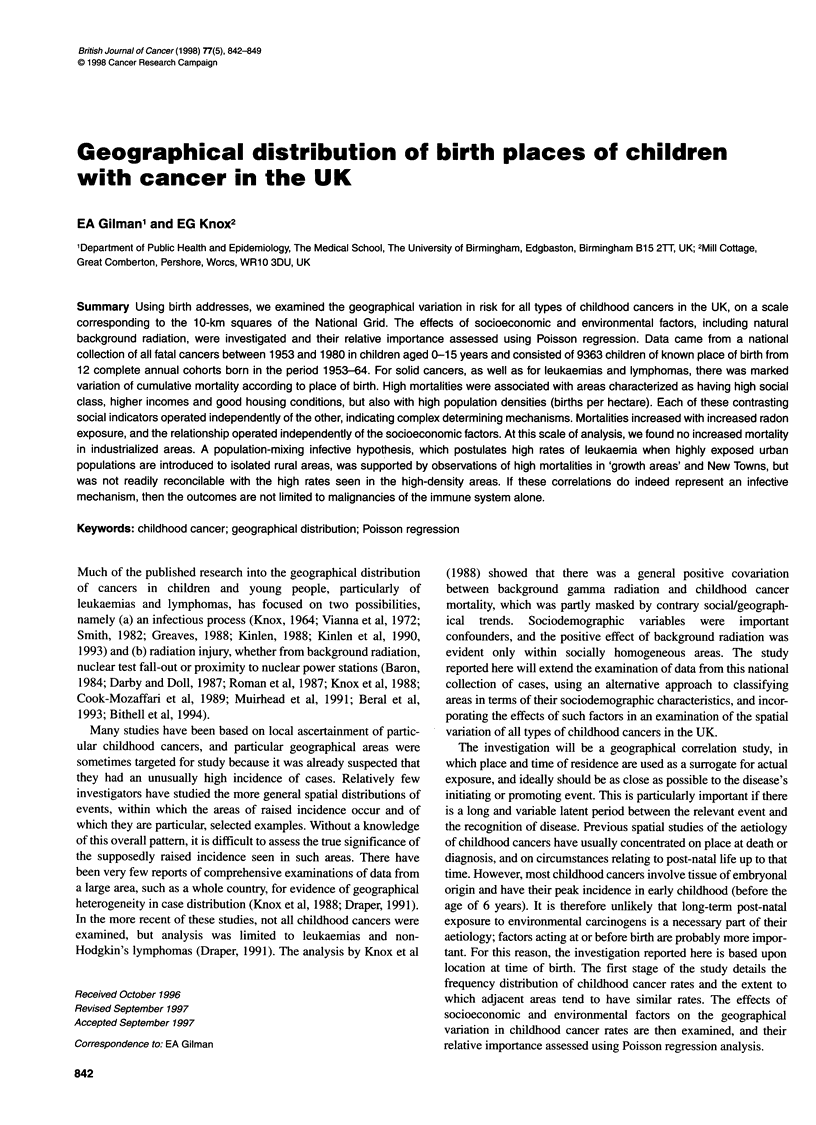
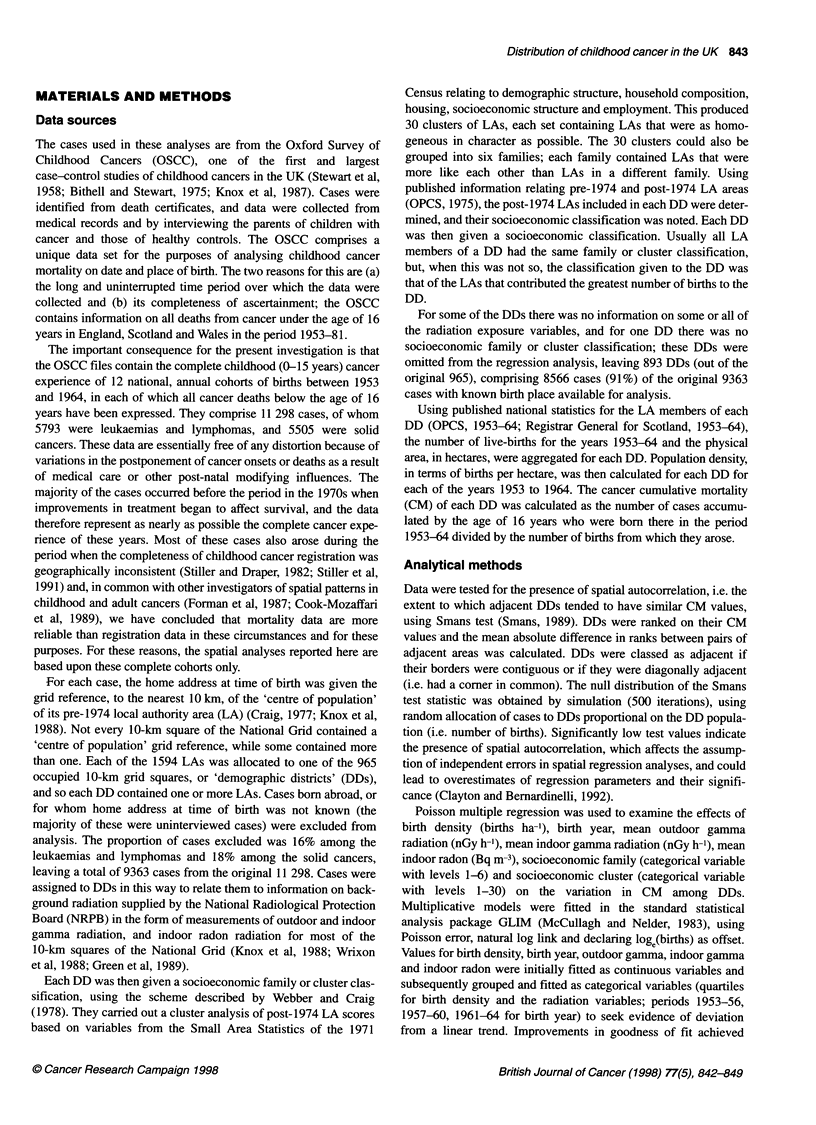
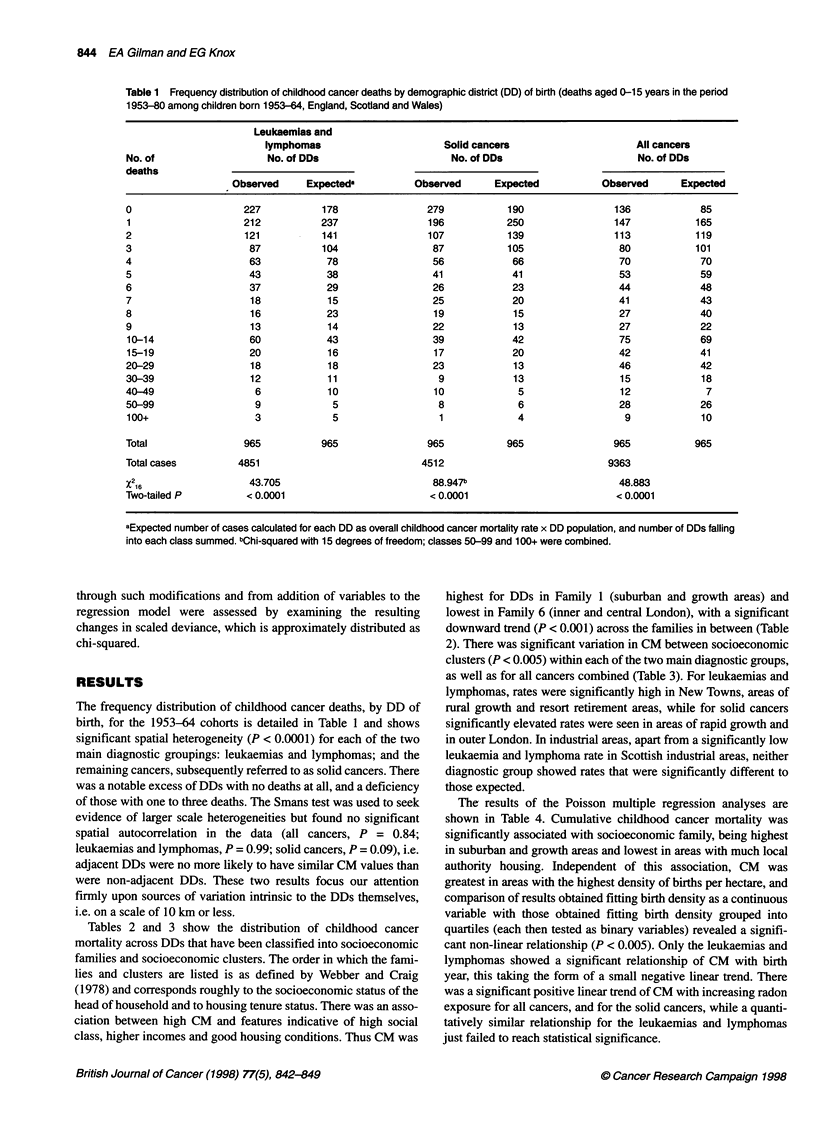
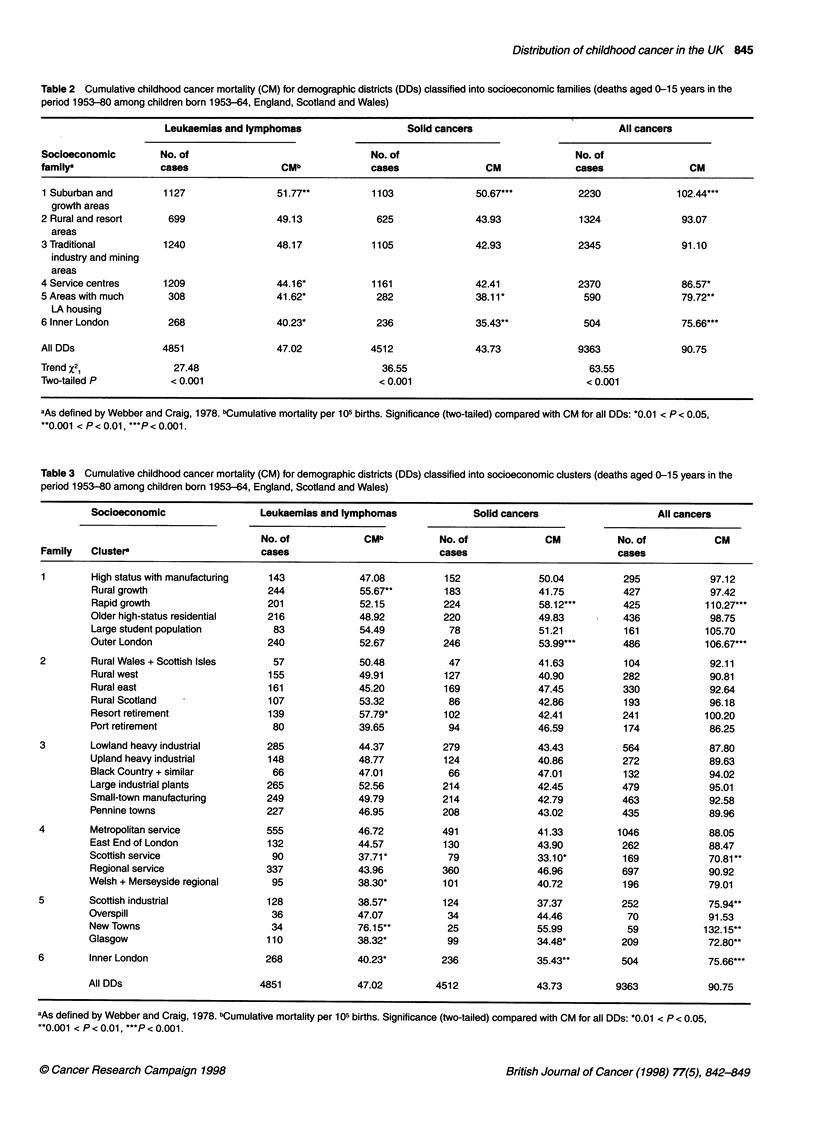
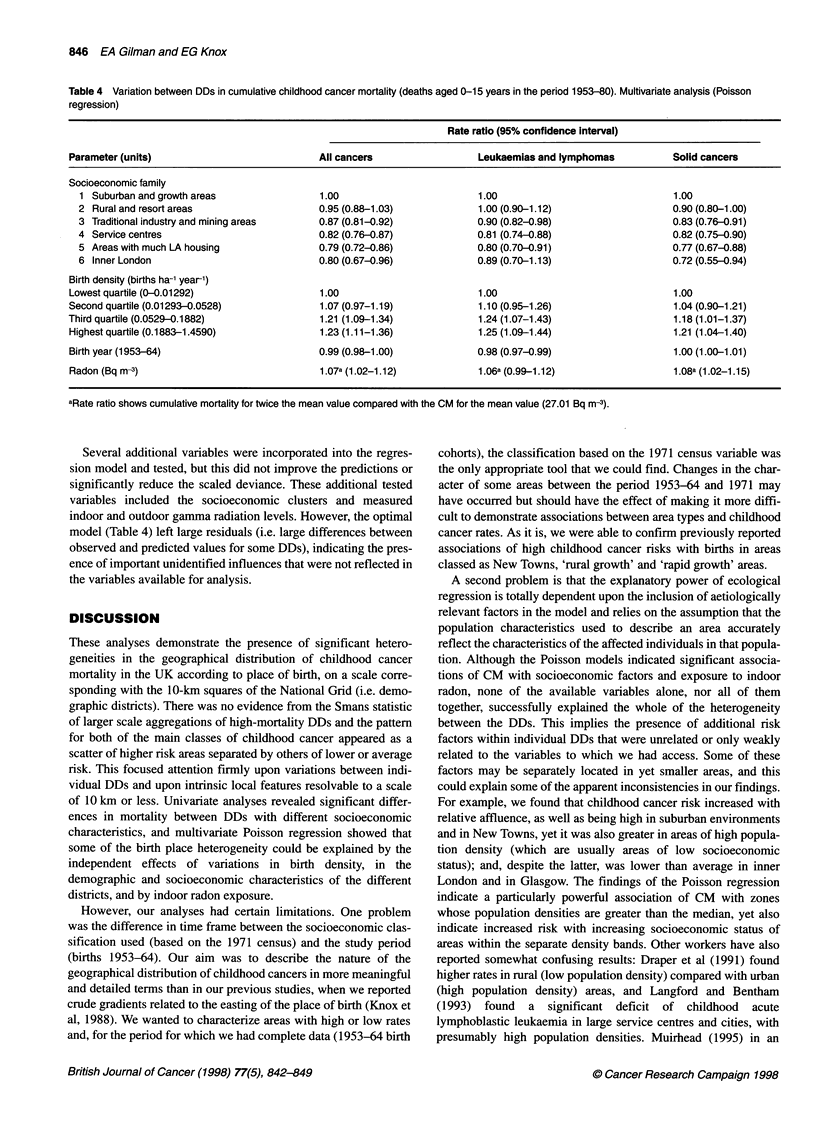
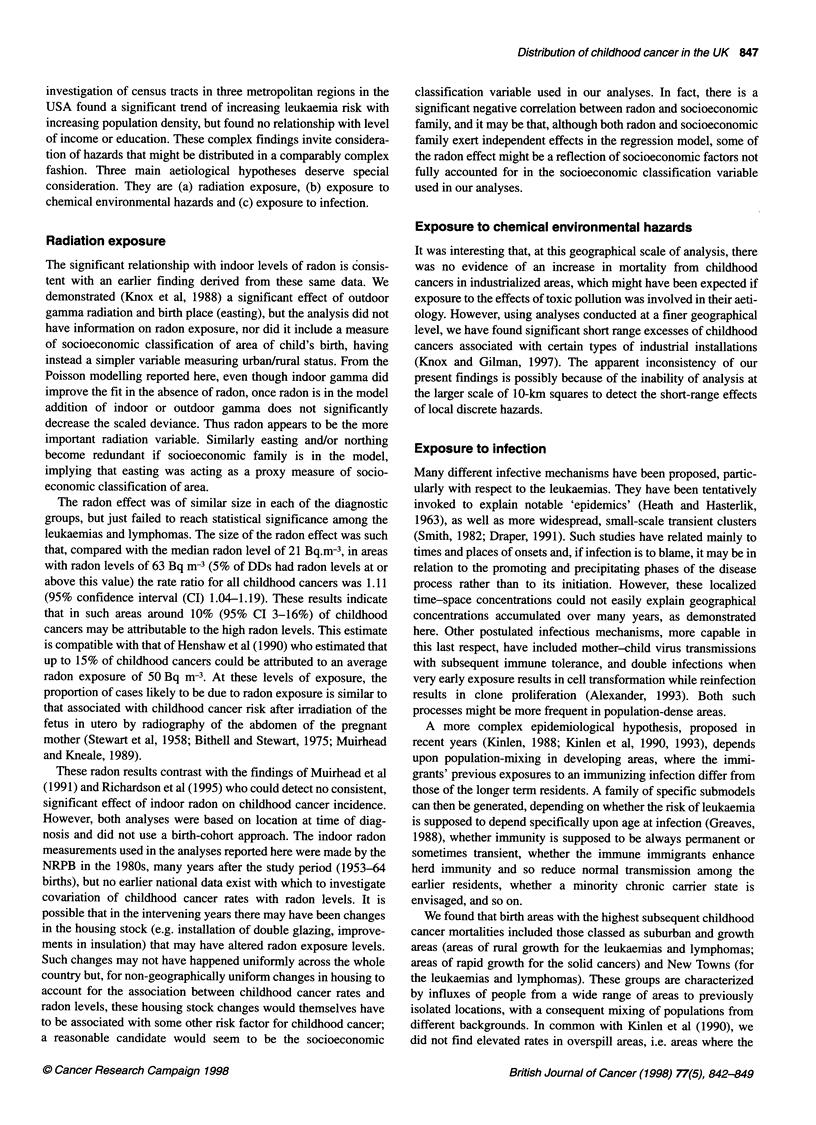
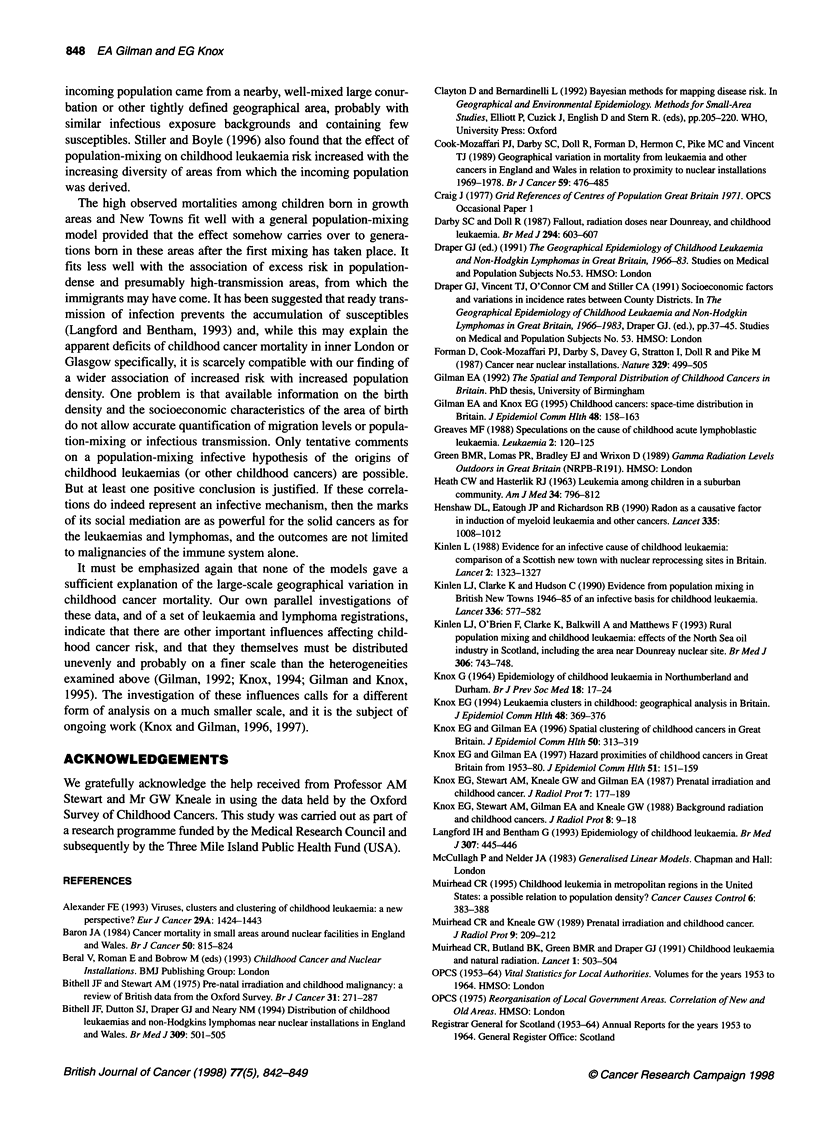
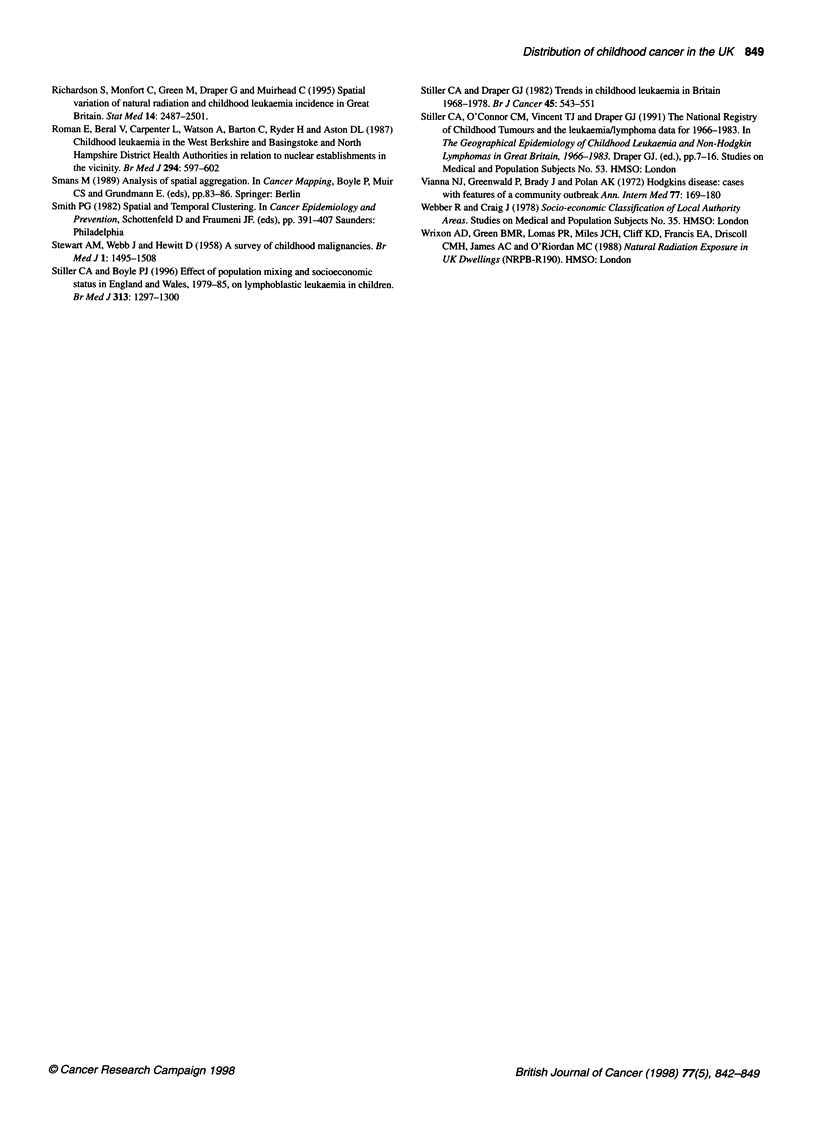
Selected References
These references are in PubMed. This may not be the complete list of references from this article.
- Alexander F. E. Viruses, clusters and clustering of childhood leukaemia: a new perspective? Eur J Cancer. 1993;29A(10):1424–1443. doi: 10.1016/0959-8049(93)90016-9. [DOI] [PubMed] [Google Scholar]
- Baron J. A. Cancer mortality in small areas around nuclear facilities in England and Wales. Br J Cancer. 1984 Dec;50(6):815–824. doi: 10.1038/bjc.1984.261. [DOI] [PMC free article] [PubMed] [Google Scholar]
- Bithell J. F., Dutton S. J., Draper G. J., Neary N. M. Distribution of childhood leukaemias and non-Hodgkin's lymphomas near nuclear installations in England and Wales. BMJ. 1994 Aug 20;309(6953):501–505. doi: 10.1136/bmj.309.6953.501. [DOI] [PMC free article] [PubMed] [Google Scholar]
- Bithell J. F., Stewart A. M. Pre-natal irradiation and childhood malignancy: a review of British data from the Oxford Survey. Br J Cancer. 1975 Mar;31(3):271–287. doi: 10.1038/bjc.1975.62. [DOI] [PMC free article] [PubMed] [Google Scholar]
- Cook-Mozaffari P. J., Darby S. C., Doll R., Forman D., Hermon C., Pike M. C., Vincent T. Geographical variation in mortality from leukaemia and other cancers in England and Wales in relation to proximity to nuclear installations, 1969-78. Br J Cancer. 1989 Mar;59(3):476–485. doi: 10.1038/bjc.1989.99. [DOI] [PMC free article] [PubMed] [Google Scholar]
- Darby S. C., Doll R. Fallout, radiation doses near Dounreay, and childhood leukaemia. Br Med J (Clin Res Ed) 1987 Mar 7;294(6572):603–607. doi: 10.1136/bmj.294.6572.603. [DOI] [PMC free article] [PubMed] [Google Scholar]
- Forman D., Cook-Mozaffari P., Darby S., Davey G., Stratton I., Doll R., Pike M. Cancer near nuclear installations. Nature. 1987 Oct 8;329(6139):499–505. doi: 10.1038/329499a0. [DOI] [PubMed] [Google Scholar]
- Greaves M. F. Speculations on the cause of childhood acute lymphoblastic leukemia. Leukemia. 1988 Feb;2(2):120–125. [PubMed] [Google Scholar]
- Henshaw D. L., Eatough J. P., Richardson R. B. Radon as a causative factor in induction of myeloid leukaemia and other cancers. Lancet. 1990 Apr 28;335(8696):1008–1012. doi: 10.1016/0140-6736(90)91071-h. [DOI] [PubMed] [Google Scholar]
- KNOX G. EPIDEMIOLOGY OF CHILDHOOD LEUKAEMIA IN NORTHUMBERLAND AND DURHAM. Br J Prev Soc Med. 1964 Jan;18:17–24. doi: 10.1136/jech.18.1.17. [DOI] [PMC free article] [PubMed] [Google Scholar]
- Kinlen L. J., Clarke K., Hudson C. Evidence from population mixing in British New Towns 1946-85 of an infective basis for childhood leukaemia. Lancet. 1990 Sep 8;336(8715):577–582. doi: 10.1016/0140-6736(90)93389-7. [DOI] [PubMed] [Google Scholar]
- Kinlen L. J., O'Brien F., Clarke K., Balkwill A., Matthews F. Rural population mixing and childhood leukaemia: effects of the North Sea oil industry in Scotland, including the area near Dounreay nuclear site. BMJ. 1993 Mar 20;306(6880):743–748. doi: 10.1136/bmj.306.6880.743. [DOI] [PMC free article] [PubMed] [Google Scholar]
- Kinlen L. Evidence for an infective cause of childhood leukaemia: comparison of a Scottish new town with nuclear reprocessing sites in Britain. Lancet. 1988 Dec 10;2(8624):1323–1327. doi: 10.1016/s0140-6736(88)90867-7. [DOI] [PubMed] [Google Scholar]
- Knox E. G., Gilman E. A. Hazard proximities of childhood cancers in Great Britain from 1953-80. J Epidemiol Community Health. 1997 Apr;51(2):151–159. doi: 10.1136/jech.51.2.151. [DOI] [PMC free article] [PubMed] [Google Scholar]
- Knox E. G., Gilman E. A. Spatial clustering of childhood cancers in Great Britain. J Epidemiol Community Health. 1996 Jun;50(3):313–319. doi: 10.1136/jech.50.3.313. [DOI] [PMC free article] [PubMed] [Google Scholar]
- Knox E. G. Leukaemia clusters in childhood: geographical analysis in Britain. J Epidemiol Community Health. 1994 Aug;48(4):369–376. doi: 10.1136/jech.48.4.369. [DOI] [PMC free article] [PubMed] [Google Scholar]
- Langford I. H., Bentham G. Epidemiology of childhood leukemia. BMJ. 1993 Aug 14;307(6901):445–446. doi: 10.1136/bmj.307.6901.445-b. [DOI] [PMC free article] [PubMed] [Google Scholar]
- Muirhead C. R., Butland B. K., Green B. M., Draper G. J. Childhood leukaemia and natural radiation. Lancet. 1991 Feb 23;337(8739):503–504. doi: 10.1016/0140-6736(91)93451-e. [DOI] [PubMed] [Google Scholar]
- Richardson S., Monfort C., Green M., Draper G., Muirhead C. Spatial variation of natural radiation and childhood leukaemia incidence in Great Britain. Stat Med. 1995 Nov 15;14(21-22):2487–2501. doi: 10.1002/sim.4780142116. [DOI] [PubMed] [Google Scholar]
- Roman E., Beral V., Carpenter L., Watson A., Barton C., Ryder H., Aston D. L. Childhood leukaemia in the West Berkshire and Basingstoke and North Hampshire District Health Authorities in relation to nuclear establishments in the vicinity. Br Med J (Clin Res Ed) 1987 Mar 7;294(6572):597–602. doi: 10.1136/bmj.294.6572.597. [DOI] [PMC free article] [PubMed] [Google Scholar]
- STEWART A., WEBB J., HEWITT D. A survey of childhood malignancies. Br Med J. 1958 Jun 28;1(5086):1495–1508. doi: 10.1136/bmj.1.5086.1495. [DOI] [PMC free article] [PubMed] [Google Scholar]
- Smans M. Analysis of spatial aggregation. Recent Results Cancer Res. 1989;114:83–86. doi: 10.1007/978-3-642-83651-0_9. [DOI] [PubMed] [Google Scholar]
- Stiller C. A., Boyle P. J. Effect of population mixing and socioeconomic status in England and Wales, 1979-85, on lymphoblastic leukaemia in children. BMJ. 1996 Nov 23;313(7068):1297–1300. doi: 10.1136/bmj.313.7068.1297. [DOI] [PMC free article] [PubMed] [Google Scholar]
- Stiller C. A., Draper G. J. Trends in childhood leukaemia in Britain 1968-1978. Br J Cancer. 1982 Apr;45(4):543–551. doi: 10.1038/bjc.1982.90. [DOI] [PMC free article] [PubMed] [Google Scholar]
- Vianna N. J., Greenwald P., Brady J., Polan A. K., Dwork A., Mauro J., Davies J. N. Hodgkin's disease: cases with features of a community outbreak. Ann Intern Med. 1972 Aug;77(2):169–180. doi: 10.7326/0003-4819-77-2-169. [DOI] [PubMed] [Google Scholar]


